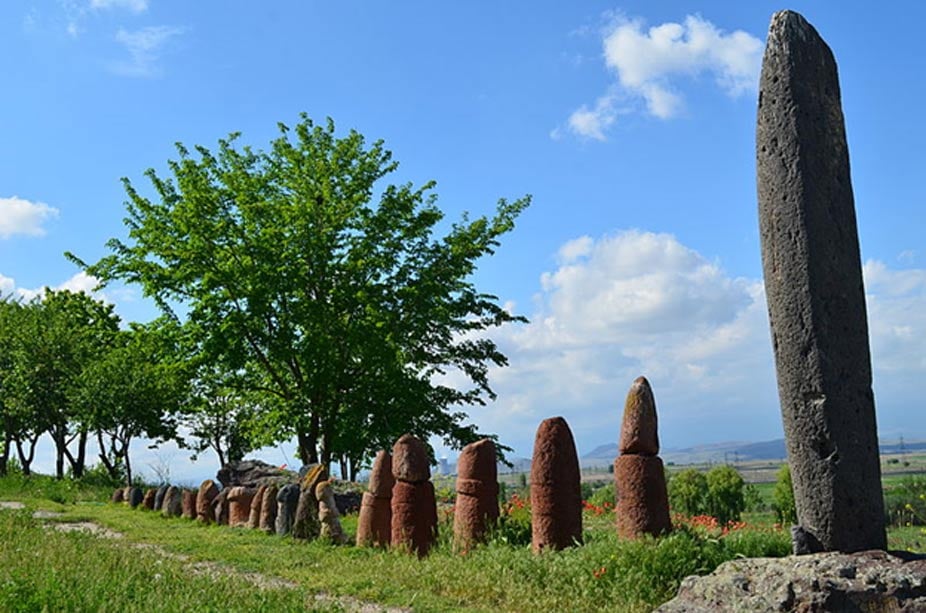Serpent Stones: The Vishap Steles of Armenia as a Symbol of Rock Art and Rich Heritage
A vishap stele (known also as vishapakar and vishap stone) is a type of stone monument that can be found in Armenia. These steles may be identified by the carvings on them, usually of fishes or snakes. Hence, the vishap steles have also been referred to as ‘serpent stones’ and ‘dragon stones’. The vishap steles are considered a part of the rock art tradition of Armenia, and are therefore treasured as part of the country’s rich heritage.
Dating the Vishap Steles
The vishap is said to be the Armenian word for dragon. According to Armenian legends, the vishaps were powerful creatures who lived in high mountains, in big lakes, or in the clouds. Representations of these mythical creatures are not limited to the vishap steles, but are also thought to have been depicted on other rock carvings found in the country.
Whilst it is at present extremely difficult for such petroglyphs to be dated, these images of the vishaps may have been made as early as prehistoric times, perhaps during the Neolithic period. In one source, the vishaps of these petroglyphs are the archetypes of dragons, and were later adopted by other civilizations to the west of Armenia.
- The Legacy of Armenia: Trade, Metallurgy, and Forging of Precious Metals of the Ancient World
- The Rise and Fall of Tigranes the Great, King of Armenia

A vishap stele. (CC BY-SA 2.5)
The vishap steles seem to be a relatively recent discovery / re-discovery. The first of these steles are reported to have been found during an archaeological excavation conducted in 1909 by N. Marr and J. Smirnov. Since their discovery, these monuments have posed questions that scholars have yet been able to find satisfactory answers to. Thus, the vishap steles are shrouded in an air of mystery. For example, it is unclear as to when the vishap steles were set up. In addition, it is unknown if these steles were set up in one go, or over a longer period of time, perhaps years, decades or even centuries.
Other Symbols and Marks
Based on the crossed and Armenian inscription found on some of the vishap steles, some of these stone monuments may be dated to the 13th century AD. Still, it is entirely possible that the steles were erected at an earlier point of time, and that these carvings were added later on, perhaps as a means of converting these pagan images into symbols of the Christian faith.
It has also been pointed out that early Urartian cuneiform have been found inscribed on a vishap stele unearthed in an Armenian village called Garni. Urartu, known also as the Kingdom of Van, was an Iron Age kingdom centered on Lake Van (situated in modern day Turkey) in the Armenian Highlands. As this kingdom existed during the 1st millennium BC, the vishap steles may have been from this period of time, or even earlier.

Lake Van viewed from the Space Shuttle Challenger. (Public Domain)
Puzzling Purpose
As the vishap steles are, at the moment, not able to be placed accurately on a timeline, the identities of its creators cannot be ascertained either. Without the knowledge of when and who produced these monuments, it is difficult to place the vishap steles within a cultural context. This in turn means that the purpose of the vishap steles is another big puzzle that scholars interested in this subject are faced with.
- The Great Erebuni of the Uratian Kingdom: Fortress of Blood
- Despite possible efforts to alter the future, a greedy ancient polity went down in flames
Nevertheless, this has not stopped people from speculating about the steles’ function. For example, the vishap steles may have served as magical guardians that warded off evil spirits or wild beasts in the field. Some vishap steles have also been found to be placed at water springs, a possible indication that the two had some sort of connection.

Dragon stone from Geghama mountains. (CC BY-SA 3.0)
It is undeniable that there is still a lot that we do not know about the vishap steles, and that more research may be able to shed light on this enigmatic monuments. Nevertheless, it seems that there is some awareness amongst the Armenians regarding the importance of these ancient objects.
For example, there is a park in the Nor Nork district of Yerevan which contains eight vishap steles. In 2010, this park was threatened by proposed construction, and residents protested against it. The residents are reported to have succeeded in suspending the construction, though no further news regarding the fate of the park and its vishap steles have been found by this writer.
Featured image: Standing stones at the ruins of the Metsamor site. Photo source: (CC BY-SA 3.0)
By Wu Mingren
References
Adalian, R. P., 2010. Historical Dictionary of Armenia. 2nd ed. Lanham, Md.: The Scarecrow Press, Inc..
ARMENPRESS, 2016. Vishap steles (Dragon steles), excavations in Tirinkatar, Genetic Connections: Year of Armenian Archaeologists to be fruitful. [Online]
Available at: http://armenpress.am/eng/news/841442/vishap-steles-dragon-steles-excavations-in-tirinkatar-genetic-connections-year-of-armenian-archaeologists.html
Grigoryants, Y. & Khachaturyan, T., 2012. Legends. [Online]
Available at: http://www.azhdahak.com/index.php?lang=en&p=legends
Ionesyan, K., 2010. Dragon Stones at Risk: Residents of Nor Nork continue protecting their park. [Online]
Available at: http://www.armenianow.com/social/environment/26663/yerevan_residents_protest_construction_vishapi_kotoghner
Petrosyan, L., 2014. Armenian Stone Dragons. [Online]
Available at: http://blog.wandelion.com/stone-dragons/
Tokhatyan, K. S., 2015. Rock Carvings of Armenia. [Online]
Available at: http://www.fundamentalarmenology.am/datas/pdfs/180.pdf
Vahanyan, G., 2015. Armenian Rock Art as Visual Knowledge for Understanding the History of Civilization in Asia, Europe and Scandinavia. [Online]
Available at: http://www.iatp.am/vahanyan/articles/valcamonica-vahanyan-2015.pdf




















Comments
They remind me of the prehistoric phallic menhirs in Corsica, such as this one: http://animulavagula.hautetfort.com/media/02/02/1822647607.jpg
Geez, these things also look a lot like the figures found at Gobekli Tepe. Could they be connected?